2050 Sustainable Materials Series: Rammed Earth
Rammed Earth as a construction material
Rammed earth is one of the most ancient construction techniques in existence. Due to its inherent sustainable nature, this material is currently experiencing a revitalisation in some parts of the world, with famous rammed earth structures found on all the continents except Antarctica.
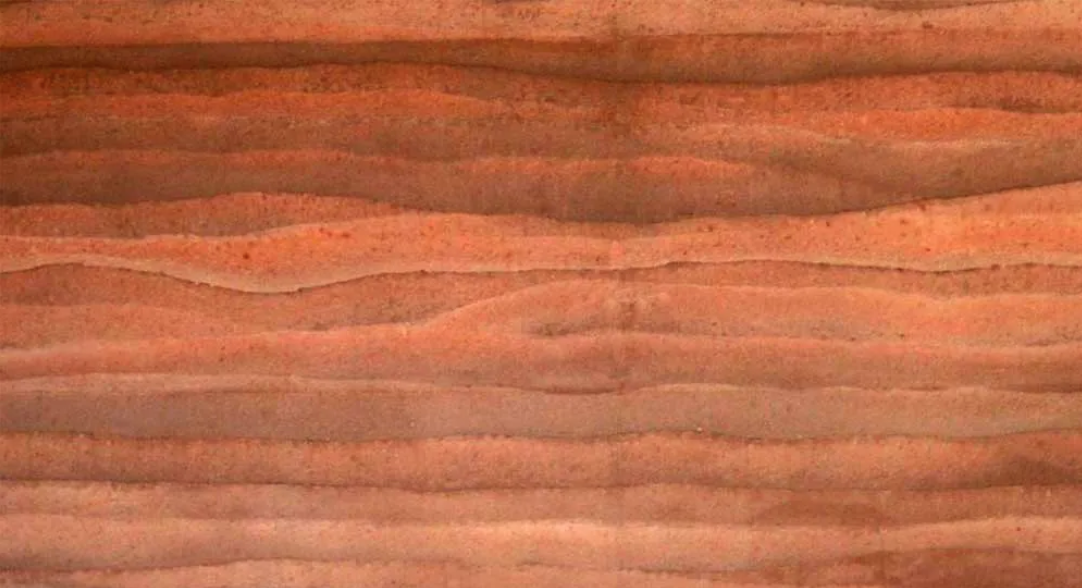
Its revival in recent years is because of an increase in demand for sustainable and natural construction.
Today, further information on existing rammed earth structures can be derived and analysed for the development of modern rammed earth construction. In China and around the Mediterranean, its use was spread globally through the movement of people and the different construction techniques they brought along with them. Through observation of historic rammed earth sites, geographical and climatic limits can be placed on the extent of rammed earth applicability.
The appearance of rammed earth will depend on the earth and aggregate used, in terms of colour and texture. However, it has a horizontally layered appearance which demonstrates the process used to construct such walls. Certain designs integrate this feature of rammed earth as part of an aesthetic effect, however, it is possible to control it so that the layers are not visible. It is often seen in red or orange tone colour.
The project below is a small contribution in the revival of this ancient technique.
Case Study:
Ground Floor Plan
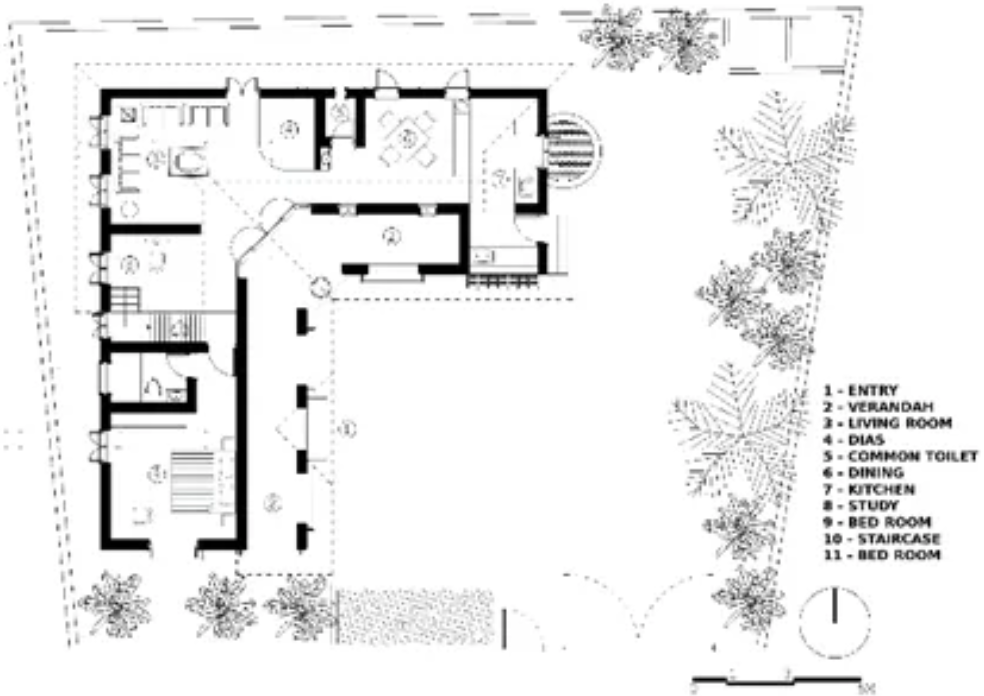
First Floor Plan
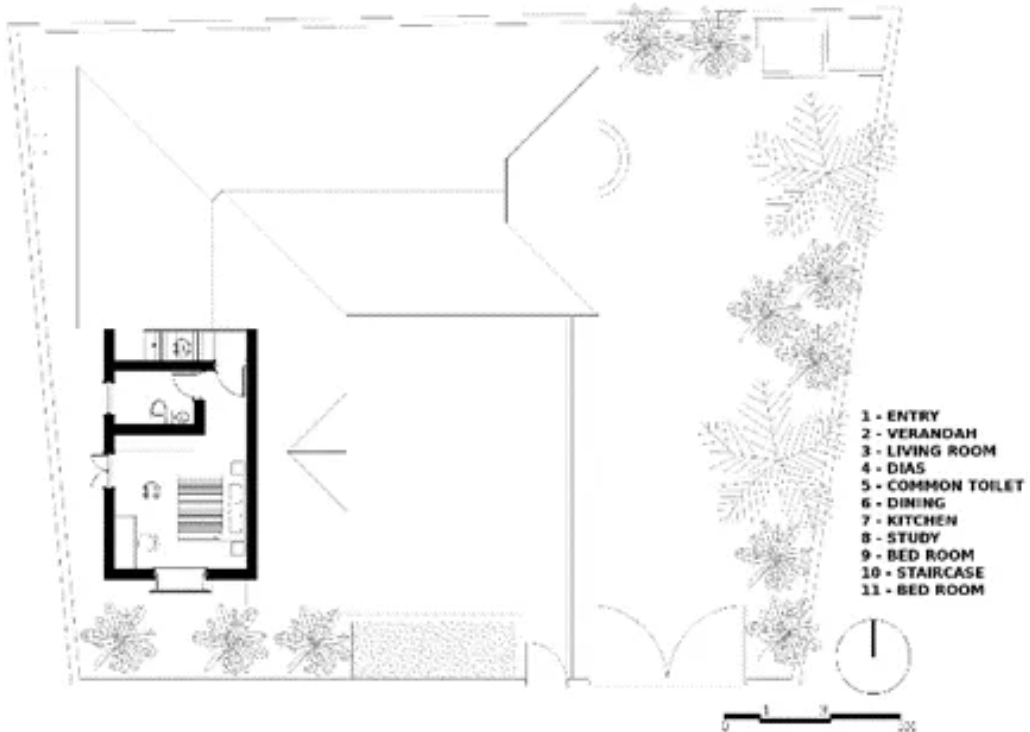
Location: India
Year of Completion: 2018
Plot Area: 364m2
Built-up Area: 167m2
Method:
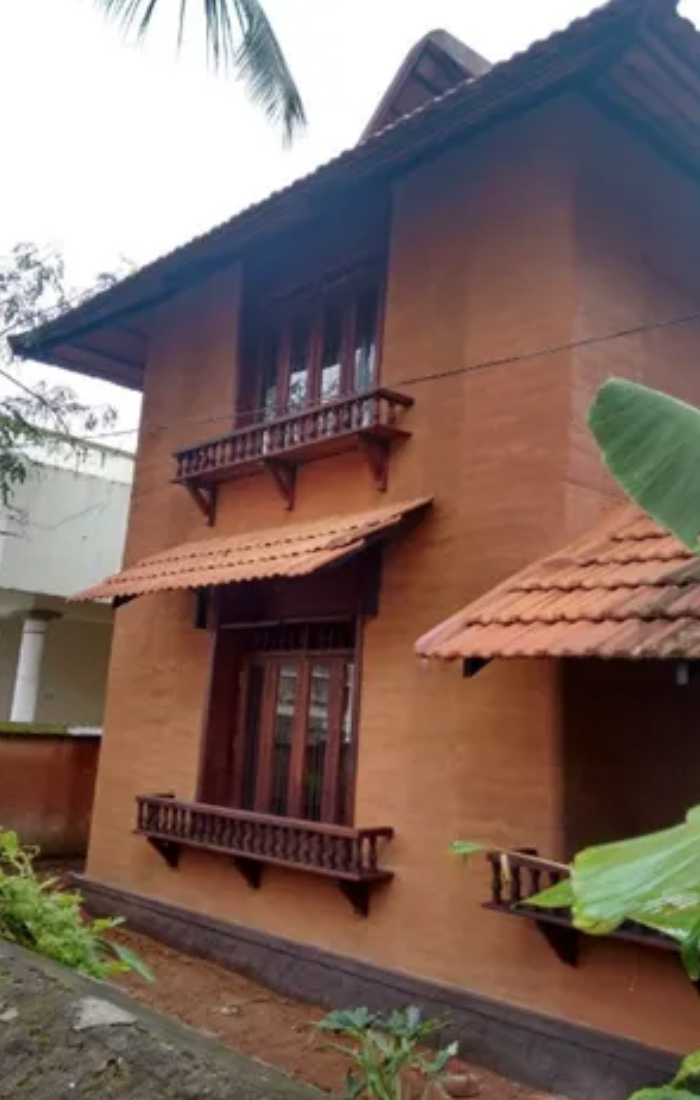
Exterior facade aesthetics
 The Rammed Earth construction technique involves compacting the moist soil in a strong and sturdy formwork. Generally, the formwork is made using timber or steel frames with timber, plywood or steel panels over it. Sufficient bracing and ties are given such that the two faces of the formwork are held together.
The Rammed Earth construction technique involves compacting the moist soil in a strong and sturdy formwork. Generally, the formwork is made using timber or steel frames with timber, plywood or steel panels over it. Sufficient bracing and ties are given such that the two faces of the formwork are held together.
The proportions of sand, clay and silt in the soil need to be checked and an appropriate stabiliser is added. Cow-dung, lime, cement, etc. can be added for increasing the binding property, and sand can be added for reducing crack formation.
Different oxides can be used as colour pigments, while pebbles and stones of different sizes can also be used to provide different wall textures.
The mixture of soil is poured in the formwork up to the depth of 15cm and it is compacted with a wooden rammer until the layer is reduced to 7.5cm in depth. Then the next layer is poured and the process continues until the desired height is achieved. Finally, the formwork is opened immediately after the wall is complete and cured with water.
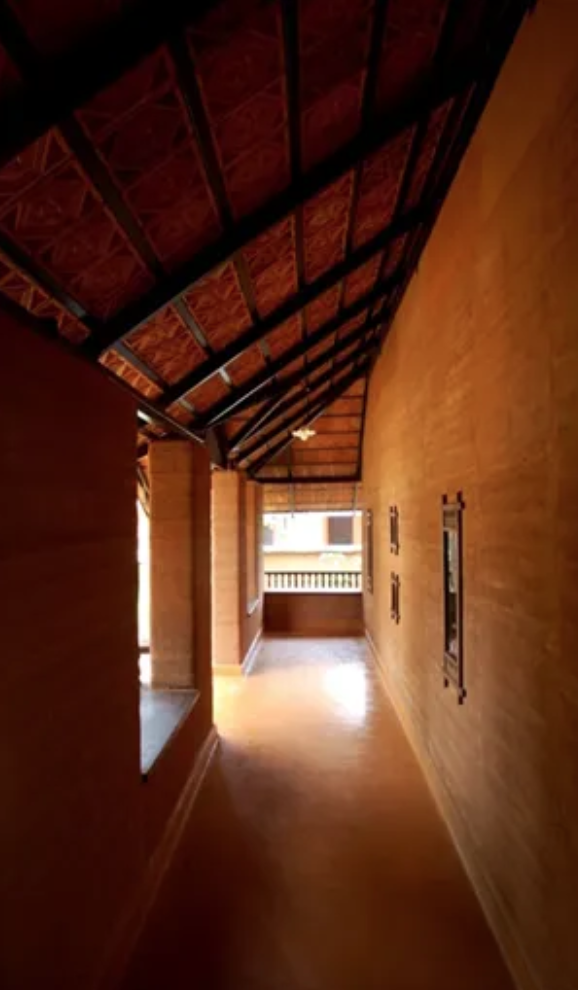
View of the balcony (Verandah)
Advantages:
- Sustainable and healthy: Rammed Earth is totally biodegradable. All the raw material used goes back to nature in its original form, thus making it one of the most environmentally suitable construction methods.
- Cost effective: Assuming the raw material is sourced on site, the overall construction cost is much lower.
- Low embodied energy: If the raw material is locally-sourced, transportation emissions are reduced significantly. In addition, the compaction can be done manually and no heating process is required, reducing the embodied energy of a Rammed Earth structure even further.
- Ease of construction: No machinery is required. All the work can be done manually.
- Insulation: Rammed Earth is highly compact and dense. Heat takes more time to travel through the walls while keeping the interior cool.
Characteristics:
- Compressive strength of Rammed Earth is around 42kg/m2, which is comparable with brick masonry and can be used to build buildings with load-bearing walls.
- The process of construction is very simple and unskilled workers can be easily trained in the process.
- Rammed Earth need to be protected from direct rain. During construction, all rammed earth structures should be protected from rainwater to avoid damaging its structural integrity.
- Conventional load-bearing foundation can be used for rammed earth structures (Note: Care should be taken so that moisture does not rise from the foundations).
- Rammed Earth with the exposed surface can control the humidity of interior spaces effectively. The clay content and pores allow the overall envelope to breathe more compared to conventional buildings.
- Insulation: A feature often exploited with rammed earth structures is thermal mass. The thermal mass slows down the movement of heat through the building envelope, and then releases the heat when the surrounding temperature drops (at night). Thermal mass structures can even out temperature variations, creating a comfortable internal environment (Note: insulating the structure inside of the building will lose all thermal mass benefits).
Limitations:
- Adding cement stabilisation can compromise environmental benefits.
- Durability concerns — requires careful detailing.
- Not all soil types can be used for rammed earth construction.
- It takes longer to construct in comparison to conventional construction techniques.
Is Rammed Earth construction back?
Even though Rammed Earth construction is a technique dating back to the Neolithic age, in the past decades it was often overlooked amongst modern construction techniques.
Earth-based building materials that have low or negligible carbon footprint are looked upon as sustainable alternatives to traditional construction materials. The need for sustainable construction is becoming a necessity in recent years, which has led to the reintroduction of this technique that provides both upfront but also operational emission benefits.
Written by: Panchami Pandharikar, Environmental Designer
2050 Materials
2050 Materials is a platform enabling easily comprehensible comparisons for building products based on materiality. It offers normalised and simplified sustainability metrics, allowing specifiers to make informed decisions efficiently when designing in line with the climate emergency.
If you are a working on securing the resilience of the built environment, we would love to talk to you!

Related articles

Climate-Resilient Materials for the Built Environment: A Data-Centred Prime
As climate volatility intensifies, resilience metrics are fast becoming as critical as carbon data in material selection. This article outlines why adaptation is now a design imperative, how materials can be evaluated through a systems lens, and what KPIs project teams should demand. From self-healing concrete to fire-rated façades, we present a structured taxonomy of resilient materials, explain how to embed this intelligence into digital design workflows, and propose next steps for specification, benchmarking, and procurement.
Read more
The Most Interesting Low Carbon Products in Office Design
In this article and collection, we highlight 11 outstanding products that contribute to a lower carbon footprint in office design.
Read more
Top Low Carbon Building Boards: Performance, Benefits, and Use Cases
The building boards highlighted in this article and collection showcase low-carbon innovation in modern construction.
Read more